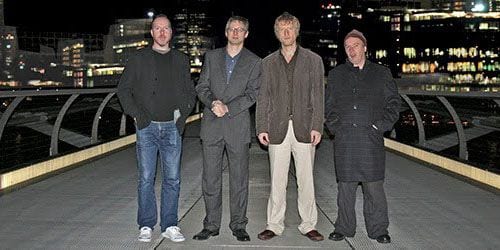
This might perhaps be not so much a critique as an apology. You see, I genuinely wanted to like this disc more than I do.
Sean O’Hagan — for all intents, the mastermind behind the High Llamas — has been someone whose work was always worth making time for. That he was a potentially major art-pop talent was evident all the way back to his days as composer and co-founder of (with singer/lyricist/force of nature Cathal Coughlan) ’80s Irish pop subversives Microdisney. O’Hagan’s butter cream-smooth melodies effectively turned FM soft-rock clichés on their blow-dried heads, all the better to place Coughlan’s classic Irish baritone and barbed, satirical observations in even higher relief.
When this volatile collaboration’s inevitable splintering came, Coughlan dove full-on into the musical aggression of Fatima Mansions; O’Hagan, for his part, chose to pursue his sophisto-pop leanings into ever lusher orchestral pastures. His High Llamas discs, most notably 1994’s Gideon Gaye and Hawaii two years later, were among the most adventurous pop creations to see the light of that decade.
Loaded with complex, sumptuously sung and arranged pop sound scapes, the Llamas discs saw O’Hagan being rightly thought of as a rival to acknowledged heroes Brian Wilson and Van Dyke Parks (individually and collectively). He was even approached by Bruce Johnston of the Beach Boys after Hawaii’s release, to oversee a proposed reconvening with Brian Wilson: a delightful notion that sadly went nowhere.
So after a few years of being perhaps regrettably out of the High Llamas orbit, we find ourselves touching down at Talahomi Way, and right from opening track “Berry Adams”, it’s obvious not much has changed within the Llamas’ artistic biosphere.
O’Hagan’s gift for airy, breezy, practically sun-dappled melodies, like the wispy and wondrous “Fly Baby Fly”, remains steady. His deft deployment of easily swinging horns, genteel strings, percussion exotica and languid keyboard pads (with the odd synthetic burble and blip), likewise maintain an effortless and maximally relaxed atmosphere. It flows and ebbs. It pleasantly sways like so many aural palm fronds.
And therein lies my problem with Talahomi Way. An overall mood of sub-tropical Pacific torpor (albeit well conveyed and executed) does get a mite soporific over the course of an album, or a handful of them, or a career‘s worth. I’ve never had a problem with being taken on a pleasant aural vacation, but to live in the eternal resort hotel lobby frequently referenced in the Llamas songs? Well, that’s a different matter.
And while extending fair play to O’Hagan — his is a niche he clearly has toiled at and can present with the best of them — there is, after all, an infinitesimally fine line between a groove and a rut.
In the end, Talahomi Way is no egregious failure, for O’Hagan at even his less-then-best can beat most pop toilers’ top-quality creations. But for the sake of future success, perhaps it wouldn’t hurt for this gent Bruce Johnston once praised as “The Highest of High Llamas” to come down from that mountain more often. All the better to take in a little less rarefied and more varied inspiration.

![Call for Papers: All Things Reconsidered [MUSIC] May-August 2024](https://www.popmatters.com/wp-content/uploads/2024/04/all-things-reconsidered-call-music-may-2024-720x380.jpg)



